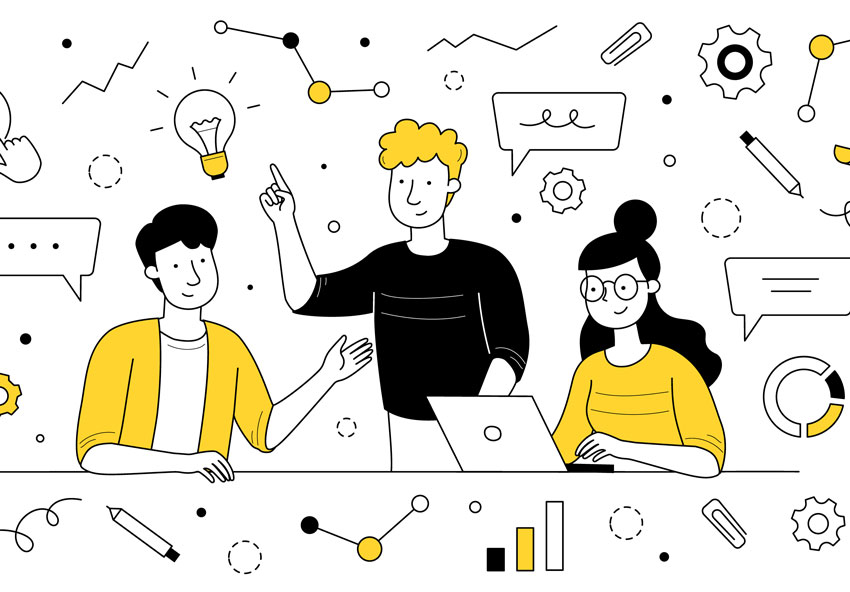Instructional design is one of the best tools organizers have when done right – and also one of the biggest wastes of time and resources when done wrong.
We all want our team and our community to be trained well, to understand the cause, and to really know how to fight for change. And we can use the theories in instructional design to get there.
But that takes critical reflection, learning from other experiences, and a willingness to do things the “harder” way.
So let’s take a look at instructional design and talk about how we can actually make training effective.

The 2 sides of the coin
Instructional design is the theory and strategy behind educational and training programs. In other words – how can we make a training course effective?
It’s the foundation for every company welcome video, university curriculum, and online course you’ll ever find. And as you might imagine – all three of those examples have vastly different goals in mind.
Which means the strategy is different, as well.
And if you’re a changemaker looking to promote a social movement – our goal is to mobilize people to build power and create change. In this sense, we want to take some of the same theories and apply them to social change.
So let’s use the principles from B.F. Skinner’s work and use them to build power for those who need it the most.

4 lessons from instructional design
We want to prepare our community. Whether they’re staff, volunteers, or friends – the same concepts apply.
Here are some great lessons from instructional design that can help organizations make truly effective training programs:
1. It’s not what people know
It’s about what people do. When you’re planning a training program, you should always be thinking about what you’re encouraging them to do.
Because, of course – it can be so helpful to learn about the theory behind social movements. You could spend your entire life learning and researching social theory.
At the end of the day, when the training is said and done – what are the participants doing? Your training should help them practice and carry out tasks important to the cause.
So keep reading because we’ll tie this into the last lesson!
2. Content must address reality
One of the MOST important lessons: make it relevant.
People learn best when the content is meaningful to them. If you’re able to train them in ways that are actively improving the community around them – they’ll be more likely to take it to heart.
The best way to make sure that you are planning a relevant program is to survey your learners beforehand. Ask them what they want to learn. Ask them what problems they’re facing. Ask them what goals they have.
Then work from there. Design your training program around achieving their goals, and you’ll find a community of motivated, engaged, and well-trained social activists.
3. Clarity is key
Clarity and transparency are two values that should get put on a pedestal at every level. It helps make sure that everyone involved is comfortable with their own actions and trusting of their support team.
In terms of instructional design, it becomes even easier to see. We need to be clear about the goals, the evaluation, and the strategy for your program. In other words, you should directly point out:
- What the goals are with the training program
- How you decided to plan it
- Why you think it will be effective
- How you evaluate its effectiveness
- When you will evaluate progress
- What you can do if your goals aren’t being met.
Clarity guarantees that you, as the organizer, are planning a highly-effective, well-thought-out program. And at the same time – the learners will trust that they are truly gaining something from it, too.
4. Participation is more effective
Tieing back in with #1 – highly participatory learning is always more effective.
Learners don’t want to just hear about what they should be doing – they want to be a part of the process! It makes a more effective educational process by directly being involved with their learning.
This kind of active learning is related to popular education and is one of the key components of an effective training program.
Instructional design has shown us that you can make learning truly effective when the learners take a more active role. So don’t have your learners sit back and half-listen to a 45-minute lecture.
Get them in there participating and being involved in the process.
That’s the key to social movement, after all.

We’re learning to do better
No one was born to be a perfect teacher. Even if you have the vocation – we’re learning more about education every day.
And whether you’re a classroom teacher or a community mentor, the same concepts apply. We can take these 4 lessons from instructional design and use these strategies for good.
Let’s make better training programs and better support the community. To get powerful leaders to make a change – they need to be trained well, first.
Check out all our articles on social change and learning how to transform the world on our blog.
Keep up the good work!





